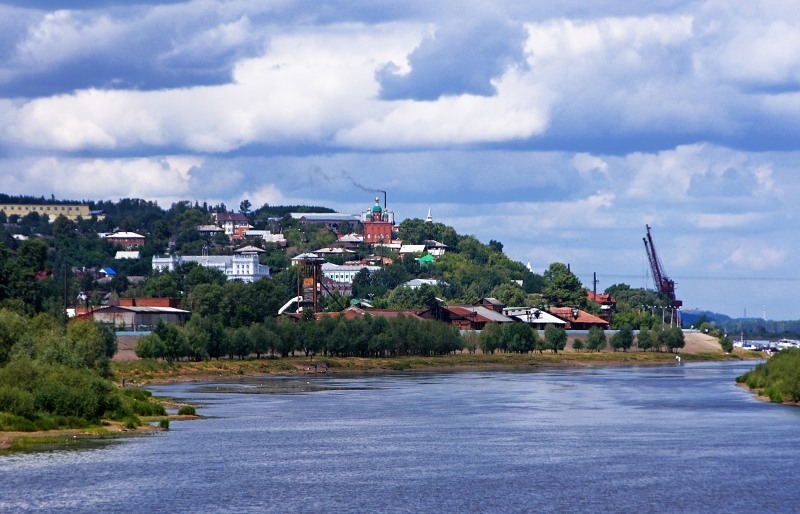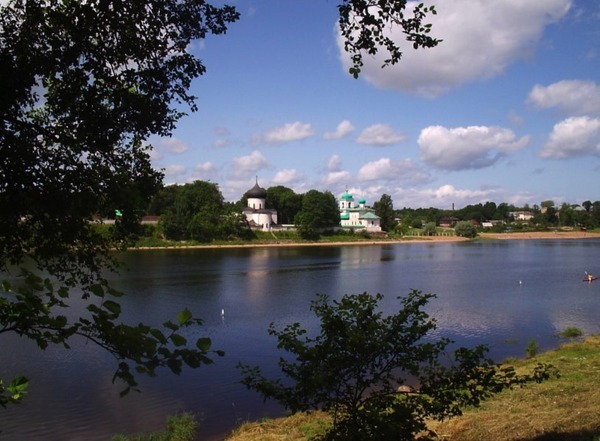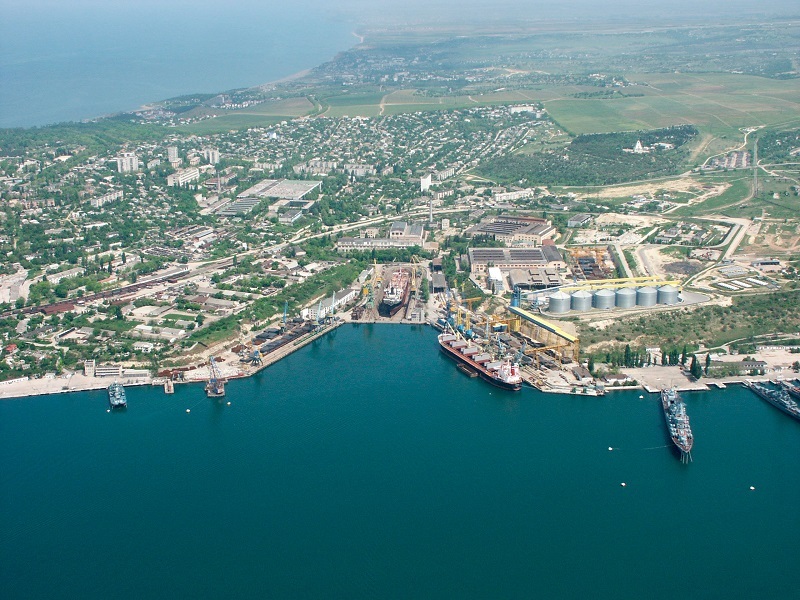The most environmentally friendly middle cities in Russia( with a population of 50 to 100 thousand people)
10th place - Revda( Sverdlovsk region).The population is 62 thousand people. Emissions - 10.8 thousand tons, stationary sources - 64%.
9th place - Velikie Luki( Pskov region).The population is 96.5 thousand people. Emissions - 8.6 thousand tons, stationary sources - 29.3%.
8th place - Belorechensk( Krasnodar region).The population is 52.6 thousand people. Emissions - 8.6 thousand tons, stationary sources - 22.2%.
7th place - Beloretsk( Bashkortostan).The population is 66.9 thousand people. Emissions - 8.4 thousand tons, stationary sources - 33.4%.Those who think about moving to Beloretsk because of its ecological cleanliness should take into account that the construction of the Belstal metallurgical complex has begun in the city, therefore in a few years Beloretsk will turn from an environmentally friendly city into a mini-analogue of neighboring Magnitogorsk, which is one of the mostpolluted cities of Russia.
6th place - Glazov( Udmurtia).The population is 94.9 thousand people. Emissions - 7,8 thousand tons, stationary sources - 54%.
5th place - Gorno-Altaisk( Altai Republic).Population - 61.4 thousand people. Emissions - 7,2 thousand tons, stationary sources - 26,5%.The capital of the Altai Republic Gorno-Altaisk is the most environmentally friendly administrative center of the subject of the Russian Federation .
4th place - Krasnokamsk( Perm region).The population is 53.7 thousand people. Emissions - 5,6 thousand tons, stationary sources - 31,7%.
3rd place - Balakhna( Nizhny Novgorod region).The population is 50.1 thousand people. Emissions - 5,4 thousand tons, stationary sources - 22,9%.
2 place - Mineral Waters( Stavropol Territory).Population - 76.2 thousand people. Emissions - 5,3 thousand tons, stationary sources - 24%.
1 place - Sarapul( Udmurtia).Once Vladimir Putin was asked during a straight line: "Why is everything so bad in Sarapul?".If you look at the amount of emissions that shows that Sarapul is the most environmentally friendly of medium-sized cities in Russia , then we can conclude that everything in Sarapul is not so bad. With a population of 99.8 thousand people. The volume of emissions is 4.7 thousand tons, of which 17.5% are for stationary sources.
Sarapul. Photos from the official site of the city

The most environmentally friendly large cities in Russia( with a population of 100 to 250 thousand people)
20th place - Zlatoust( Chelyabinsk region).The population is 170,900 people. Emissions - 11.9 thousand tons, stationary sources - 30.3%.
19th place - Nefteyugansk( Khanty-Mansi Autonomous Area).Population - 125.8 thousand people. Emissions - 11.9 thousand tons, stationary sources - 5%.
18th place - Kyzyl( Tyva).The population is 114 thousand people. Emissions - 11.6 thousand tons, stationary sources - 43.2%.
17 place - Yelets( Lipetsk region).Population - 106.3 thousand people. Emissions - 9.7 thousand tons, stationary sources - 40.5%.
16th place - Pyatigorsk( Stavropol Territory).The population is 145.9 thousand people. Emissions - 9.4 thousand tons, stationary sources - 12.1%.
15 place - Berdsk( Novosibirsk region).Population - 101,7 thousand people. Emissions - 9 thousand tons, stationary sources - 41%.
14th place - Elista( Kalmykia).Population - 104 thousand people. Emissions - 8.7 thousand tons, stationary sources - 7.8%.
13th place - Bataisk( Rostov region).The population is 117.4 thousand people. Emissions - 8,5 thousand tons, stationary sources - 11,6%.
12th place - Dimitrovgrad( Ulyanovsk region).The population is 124 thousand people. Emissions - 8.3 thousand tons, stationary sources - 20.9%.
11th place - Novocheboksarsk( Chuvashia).The population is 124 thousand people. Emissions - 8,1 thousand tons, stationary sources - 39,8%.
10th place - Khasavyurt( Dagestan).The population is 135.3 thousand people. Emissions - 7,5 thousand tons, stationary sources - 2,3%.
9th place - Obninsk( Kaluga region).The population is 107.3 thousand people. Emissions - 7,4 thousand tons, stationary sources - 8%.
8th place - Arzamas( Nizhny Novgorod region).Population - 105 thousand people. Emissions - 7,1 thousand tons, stationary sources - 20,8%.
7th place - October( Bashkortostan).The population is 112.2 thousand people. Emissions - 6,3 thousand tons, stationary sources - 16,1%.
6th place - Kislovodsk( Stavropol Territory).The population is 130 thousand people. Emissions - 6,2 thousand tons, stationary sources - 7,9%.
5th place - Essentuki( Stavropol Territory).The population is 103 thousand people. Emissions - 5,3 thousand tons, stationary sources - 9,1%.
4th place - Novoshakhtinsk( Rostov region).The population is 109.5 thousand people. Emissions - 4,5 thousand tons, stationary sources - 23,7%.
3rd place - Nazran( Ingushetia).Population - 105.8 thousand people. Emissions - 4,3 thousand tons, stationary sources - 2,2%.
2 place - Kaspiysk( Dagestan).Population - 105.1 thousand people. Emissions - 3.9 thousand tons, stationary sources - 2.1%.
1 place - Derbent( Dagestan).Derbent is not only the oldest city on the territory of Russia( Derbent was founded in 438 AD), but is also the most environmentally friendly medium( emissions lower than in Sarapul) and large Russian cities .With a population of 120.5 thousand people, the annual emissions amount to 3.3 thousand tons, of which 13.8% are stationary sources.
Derbent. Photo from the official site of the city
Separately worth noting Pskov, whose population is 206.7 thousand people. This city did not get into the top 20 ecologically clean cities with a population of 100 to 250 thousand people, but the Pskov is the most environmentally friendly regional center of Russia .Its annual emission figure is 19,1 thousand tons, for stationary sources it is 35,5%.
Pskov. Photo author - Lyudmila Lapaeva

The most environmentally friendly large cities in Russia( with a population of 250 thousand to 1 million people)
12th place - Stavropol( Stavropol Territory).The population is 419.8 thousand people. Emissions - 26.6 thousand tons, stationary sources - 16.2%.
11th place - Vologda( Vologda region).Population - 308.2 thousand people. Emissions - 26.6 thousand tons, stationary sources - 14.6%.
10th place - Yoshkar-Ola( Mari El).The population is 260.3 thousand people. Emissions - 26.2 thousand tons, stationary sources - 45.4%.
9th place - Tambov( Tambov region).The population is 285 thousand people. Emissions - 25.5 thousand tons, stationary sources - 33.3%.
8th place - Saransk( Mordovia).The population is 299.2 thousand people. Emissions - 24.1 thousand tons, stationary sources - 29.4%.
7th place - Petrozavodsk( Karelia).The population is 272.1 thousand people. Emissions - 23.4 thousand tons, stationary sources - 13.5%.
6th place - Vladikavkaz( North Ossetia - Alania).Population - 308.3 thousand people. Emissions - 22.8 thousand tons, stationary sources - 12.6%.
5 place - Kostroma( Kostroma region).The population is 273.4 thousand people. Emissions - 22.6 thousand tons, stationary sources - 31.8%.
4th place - Grozny( Chechnya).The population is 280.2 thousand people. Emissions - 21.9 thousand tons, stationary sources - 49.7%.
3rd place - Sochi( Krasnodar region).Population - 400 thousand people. Emissions - 21,2 thousand tons, stationary sources - 16,9%.
2 place - Taganrog( Rostov region).The population is 253.5 thousand people. Emissions - 18 thousand tons, stationary sources - 38,8%.
1 place - Sevastopol. The population is 414.3 thousand people. Emissions - 9,2 thousand tons, stationary sources - 16%.
Sevastopol

As for the millionaires, they are in full force in the rating of the most ecologically polluted cities in Russia.
Once every two years, the Federal State Statistics Service( Rosstat) publishes the Bulletin "Key Environmental Indicators", which, inter alia, presents data on cities in Russia for emissions of air pollutants from stationary sources( ie enterprises) and road transport. The most complete bulletin for today is published on July 1, 2013, it presents data for 2012.Data for 2014 were published in 2015, but the focus in the study was made on the regions in general, and not on individual cities. The 2015 study presents data for 37 cities, which is much lower than in the 2013 study, which presents data for 181 cities, while the 2015 study does not contain data on automobile emissions. Therefore, in this ranking of the most environmentally friendly cities in Russia, the total amount of emissions used data from the bulletin of 2013, and not 2015. From the list of 2015, the rating used data only for Sevastopol.
It is worth noting that Rosstat publishes data not for all Russian cities, but only for developed industrial centers, so the environmentally friendly small towns, where there is virtually no industry, are not included in the Rosstat list.
As a rule, the larger the city, the more emissions there are. Therefore, the rating is divided into three categories according to the traditional Russian classification of cities by population: medium cities( from 50 to 100 thousand people), large cities( from 100 to 250 thousand people), large cities( from 250 to 1 million people.).In total, the list includes the 10 most environmentally friendly emissions from the average Russian cities, 20 large and 12 large.



